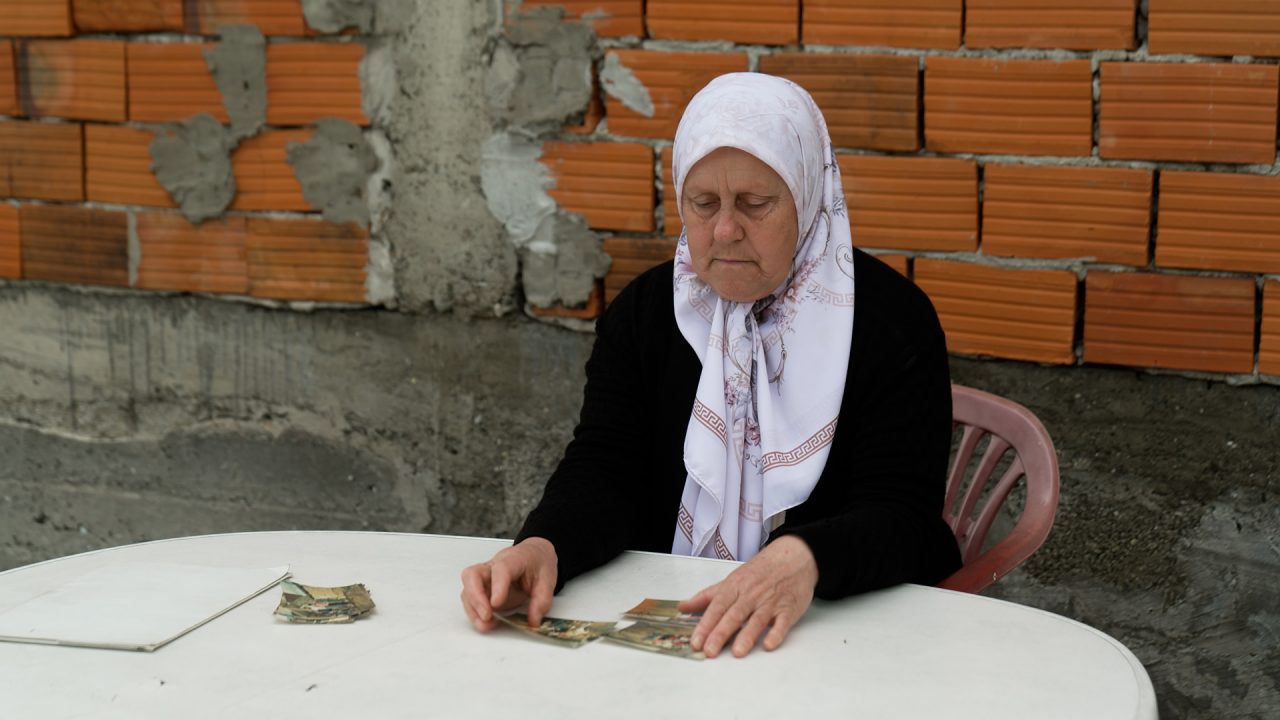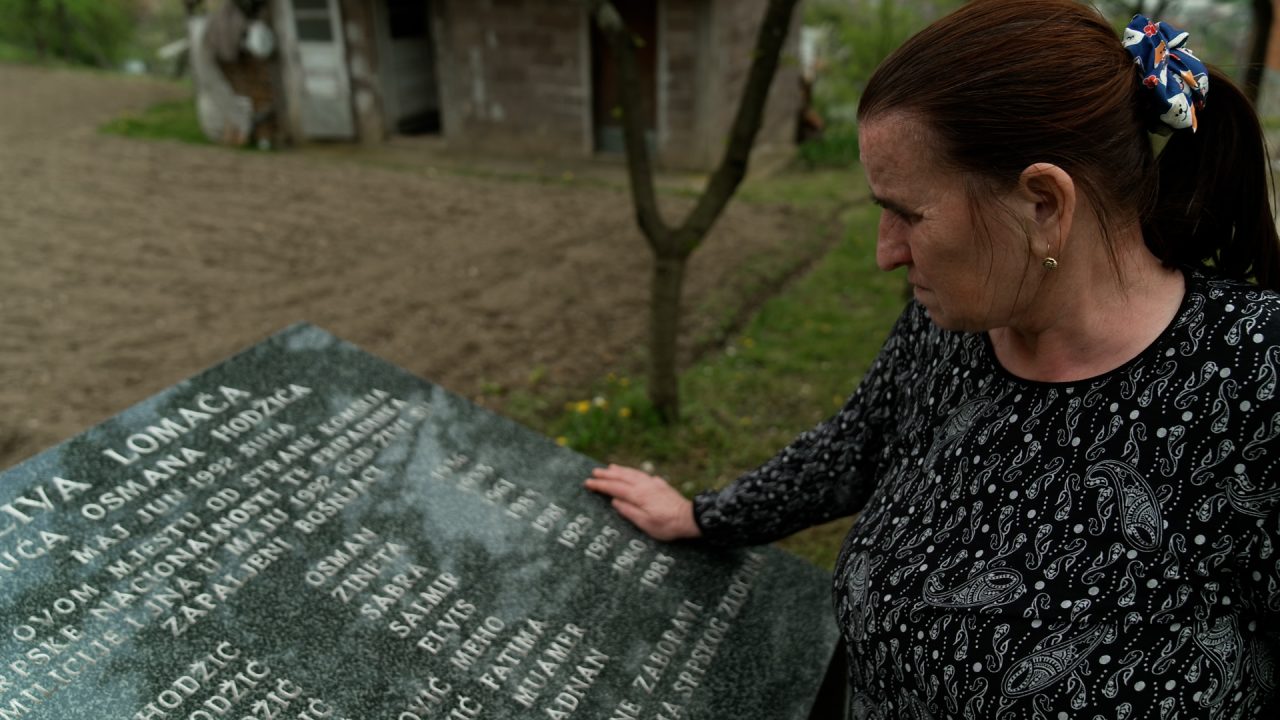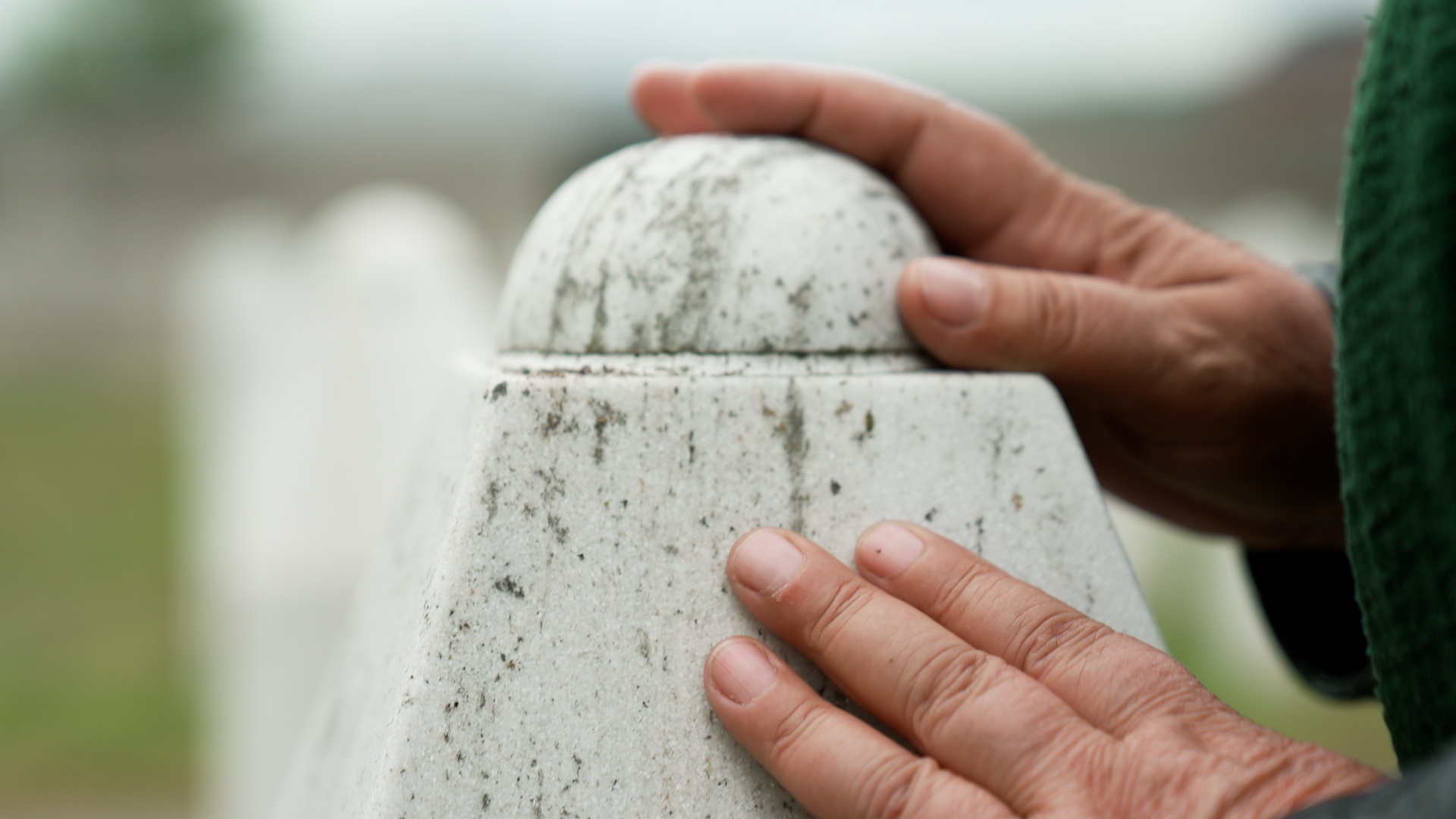This post is also available in: Bosnian
On May 12, at the Veljaci cemetery in Bratunac, Hajrudin Paraganlija will bury the remains of his wife Zineta and daughter Almera, who was one year old when she was killed.
Both mother and child were found in a mass grave in the village of Joševa in the Bratunac area, where they lived.
“How do you think a man feels when he loses his daughter, wife, mother, sister-in-law and her daughter? They were killed in an attack by Serb forces on the village on May 23, 1992. I still haven’t found my mother or my brother Adil,” said Hajrudin.
The remains of his daughter and wife were identified through DNA analysis by the Commemorative Centre in Tuzla. According to the Missing Persons Institute of Bosnia and Herzegovina, 32 children are still unaccounted for in Bratunac.
Derviša Hodžić is still searching for the remains of Elvis, her husband’s son from a previous marriage. He was killed along with his brother Salmir and mother Zineta in the village of Suha, near Bratunac.
Pointing to the location of the house that was set on fire on May 10, 1992, she recounted how she met her husband Beriz later, in Srebrenica, where he told her what had happened to his son.
“We met in Srebrenica, where he had to fled to from Bratunac, and he gave me his account. We got married and were together for under two years. We had two sons,” said Derviša.
Beriz went missing during the fall of Srebrenica in July 1995. He was buried in 2004 at the Srebrenica Memorial Centre in Potočari.
“An older man told us in Srebrenica how that night, while passing by the house, he could smell human flesh burning,” recalls Derviša.
Salmir was nine and Elvis 11. She says Salmir’s remains have been found, but she is still hoping that Elvis’s will be located.
“My children gave blood for DNA analysis. My only wish is to find them and give them a proper burial. I told my kids, ‘If only they were live, I would spend every penny to have them go through school.’ But sadly, none of that is possible,” Derviša tells Detektor while showing Elvis and Salmir’s school photos.
On the plaque in the yard where she lives are inscribed the names of Hodžić Osman and Zineta – her husband’s parents, then the names of Sabra, Salmir and Elvis – first wife and her husband’s sons, as well as spouses Meho and Fatima Džananović and the boys Muamer and Adnan Ramić.
On April 17, 1992, Serb forces took control of the Bratunac municipality and systematic efforts were made to disarm Bosniaks in the area, according to multiple judgments from the International Criminal Tribunal for the Former Yugoslavia, ICTY.
After homes in the Bosniak villages of Cerivac and Polje were set on fire on May 9, 1992, Serbian forces attacked the Bosniak-populated villages of Suha and Mihaljevići the next day, capturing the men and taking them to the Vuk Karadžić School, while women and children were taken to the football stadium in Bratunac.
These details were established in judgments in the trials of Radovan Karadžić, the first President of Republika Srpska, who was sentenced to life in prison for genocide and other crimes, and Momčilo Krajišnik, who was the speaker of the Republika Srpska Assembly, and was sentenced to 27 years for crimes against humanity, persecution, extermination, murder and deportation of non-Serbs across Bosnia and Herzegovina.
‘I didn’t give birth to them, but I raised them’

Safeta Sinanovic with photos of children in Suha: Photo: Detektor
Safeta Sinanović is still searching for Jasmin and Salko, the missing sons of her husband Junuz from his first marriage. Jasmin was 12 and Salko was 11 when they went missing during the war. Both attended the Vuk Karadžić Primary School in Bratunac.
Safeta also had a son and daughter with Junuz.
“One night there was shooting in the village, and my husband was afraid for the children. The next morning, he said: ‘Take these kids to your mother in Suha; I will take the other two to my mother in Velići. If one group dies, the other will survive. Someone will live on once I’m gone. We could have all been killed last night.’ That’s how we parted,” recounts Safeta.
Her husband fled into the woods, and she regularly brought him food there and visited his sons at their grandmother’s house. She describes them as lively, dark-haired boys who spent their days playing with a ball and were very fond of their brother and sister.
“I didn’t give birth to them, but I raised them. I was their second mother. They tried even harder to be good to me. They called me mum, mother,” recalls Safeta.
On May 10, 1992, Safeta managed to flee to Živinice with her children, but she never learned what happened to Jasmin and Salko. According to villagers from Suha who fled after her, they were killed and their bodies burned, while her mother-in-law was found dead on a forest path.
“I hope to find them while I’m still alive, to know where their grave is so their brother and sister can go and say a prayer. I would beg anyone who knows anything to tell me where they were taken or killed. We’ve tried everything – I searched every hollow tree trunk and stream, looking for them. I desperately want to find them,” says Safeta.
Her husband Junuz was killed in Srebrenica in 1992 and is buried in Veljaci. Ramiz Salkić’s brother will also be buried there on May 12 this year.
Mourning at the Suha mass grave site

Dervisa Hodzic in front of the monuments to the victims in Suha. Photo: Detektor
After more than three decades of searching, Ramiz Salkić will finally bury the remains of his brother Hamdija in Veljaci, next to their brother Ahmet and father Hamed. From the Vuk Karadžić School, they were transferred to a camp in Pale and later exchanged in an area between Ilijaš and Visoko.
“I was sent to a family to recover, and he, along with friends and our cousin, headed toward Sarajevo. I know they reached Ahatovići. Shortly after, Ahatovići was attacked, and then there were terrible crimes. Some of the group managed to return to Visoko, but he and our cousin Šerif didn’t. They were captured again, taken to Ilijaš, and killed,” Ramiz explains.
He says his brother was mistakenly buried under a different name in Ilijaš due to an identification error during exhumation from a mass grave. Last year, Bosnia and Herzegovina’s Prosecutor’s Office ordered a re-exhumation and DNA analysis, confirming the remains belonged to Ramiz’s older brother.
“Sadly, we’re in a situation where we’re no longer hoping someone is alive, but rather that we’ll be told that bones were found and we’ll finally know where the grave is,” says Ramiz.
So far, the remains of 307 people killed during the war have been buried at the Veljaci Memorial Centre near Bratunac. At the collective funeral on May 12, five more individuals will be laid to rest. Another 42 were buried in family cemeteries, says Šuhra Sinanović, president of the Women of Podrinje Association from Bratunac.
“Entire families – nine of them – disappeared in Bratunac,” she adds.
Another 280 people from the Bratunac area are still missing.
“Most of the mass graves have been found in the Bratunac and Zvornik areas,” Sinanović says.
With victims’ families, she will visit the mass grave site in Suha, where the remains of 38 women and children were exhumed, on May 10. The same day, they will drop roses from the Ljubovija Bridge into the river to honour the missing.
This analysis was written with the support of the EU-funded project EU Support to Confidence Building in the Western Balkans, implemented by the United Nations Development Programme (UNDP). The content is the sole responsibility of BIRN and does not necessarily reflect the views of the European Union or UNDP.
